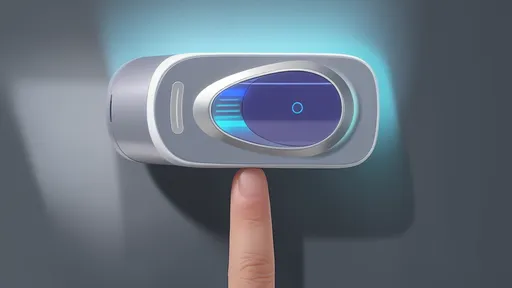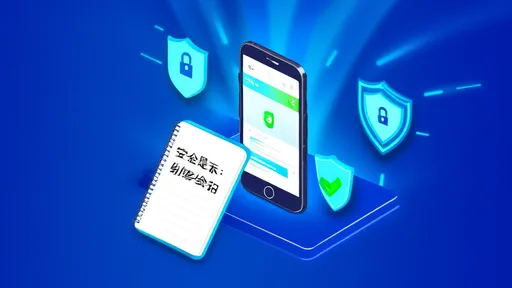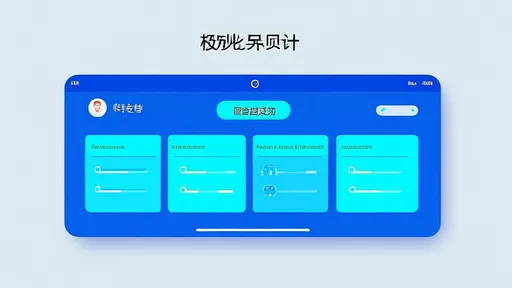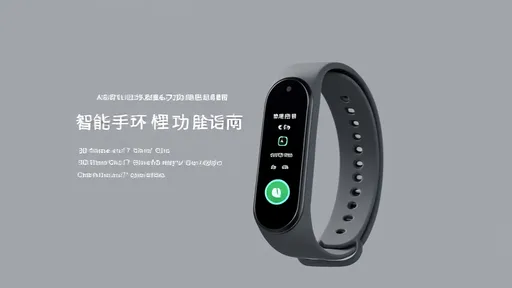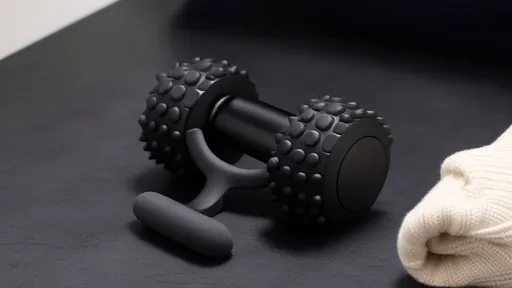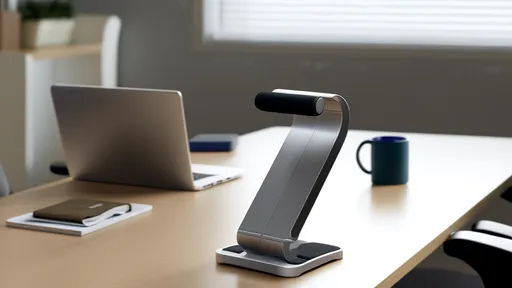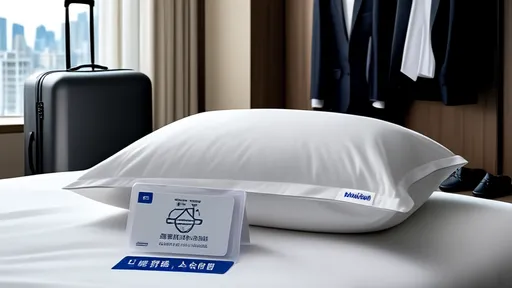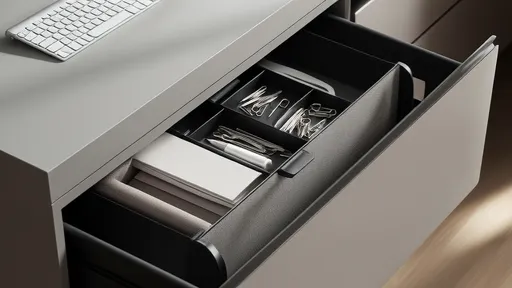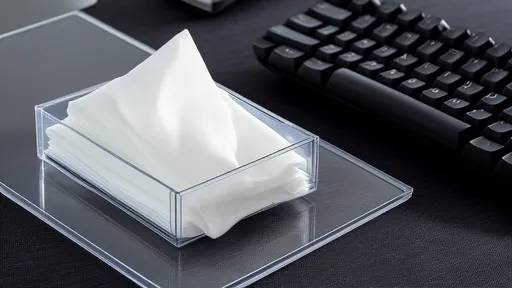The rise of digital healthcare credentials has brought unprecedented convenience to patients worldwide, but it has also opened new avenues for fraudsters. Electronic medical insurance certificates, designed to streamline access to healthcare services, have become a prime target for sophisticated cybercriminals. This phenomenon isn't isolated to any particular region—from Beijing to Boston, healthcare systems are witnessing an alarming increase in digital credential theft.
Understanding the anatomy of these digital thefts reveals disturbing patterns. Unlike traditional identity theft where criminals might max out credit cards, stolen e-medical credentials often fuel more insidious schemes. Fraudsters might use compromised accounts to obtain expensive prescription drugs, file false insurance claims, or even access sensitive medical records for blackmail. The underground market for medical identities commands premium prices precisely because healthcare systems typically detect such fraud much later than financial breaches.
Healthcare providers initially underestimated the attractiveness of medical credentials to criminals. A single electronic medical ID can be ten times more valuable than a credit card number on dark web marketplaces, according to cybersecurity researchers. This valuation stems from the rich personal information attached to medical accounts and the relative difficulty victims face in discovering the breach. While banks immediately notify customers of suspicious transactions, medical fraud might go undetected for months.
The sophistication of attacks continues evolving. Early methods involved simple phishing emails disguised as healthcare portal login pages. Contemporary schemes employ advanced social engineering, sometimes impersonating insurance representatives to extract verification codes. More alarming are the cases where criminals exploit system vulnerabilities to intercept SMS authentication messages or manipulate mobile apps through malware.
Protection begins with recognizing how these digital credentials differ from other sensitive information. Unlike credit cards that can be quickly canceled, medical identities represent ongoing relationships with healthcare providers. The aftermath of medical identity theft often leaves victims battling incorrect medical records, denied insurance claims, and potentially life-threatening treatment errors based on adulterated health histories.
Technological solutions alone cannot solve this crisis. While biometric authentication and blockchain-based verification systems show promise, the human element remains both the weakest link and strongest defense. Patients accustomed to two-factor authentication for banking often fail to apply similar vigilance to healthcare apps. Many reuse passwords across multiple platforms or disable security features for convenience, unknowingly handing criminals master keys to their medical identities.
The healthcare industry faces unique challenges in credential protection. Strict privacy regulations often conflict with robust security measures, creating systems that prioritize accessibility over protection. Unlike financial institutions that freely share fraud patterns, healthcare providers bound by patient confidentiality laws struggle to coordinate against emerging threats. This fragmentation allows criminals to exploit the same vulnerabilities across multiple healthcare networks.
Emerging technologies might shift this balance. Some systems now employ behavioral biometrics that analyze how users interact with devices—measuring typing patterns, swipe gestures, and even how they hold their phones. These subtle markers create continuous authentication far more difficult to spoof than static passwords. Other innovations include time-limited access tokens that grant healthcare providers temporary credentials rather than permanent access.
The psychological dimension of medical identity theft demands equal attention. Victims often describe the violation as more traumatic than financial fraud, given the intimate nature of medical information. This emotional impact frequently paralyzes victims, delaying crucial reporting that could limit damage. Support systems for these victims remain underdeveloped compared to infrastructure for financial identity theft, leaving many to navigate complex bureaucratic mazes alone.
International collaboration shows glimmers of progress. Cybersecurity task forces specializing in healthcare fraud have disrupted several major medical identity theft rings in recent years. Their investigations reveal sophisticated operations with division of labor—some members hack systems, others create fake IDs, while different teams actually utilize the stolen credentials. This professionalization mirrors the structure of financial cybercrime syndicates, signaling the alarming maturation of medical identity theft as an industry.
Preventative education requires moving beyond generic cybersecurity warnings. Patients need specific guidance about medical credential protection, such as recognizing fake insurance verification calls or identifying compromised accounts through subtle irregularities in explanation of benefits statements. Healthcare providers must train staff to spot red flags during patient interactions that might indicate identity theft, like inconsistencies in medical history or unexpected changes to contact information.
The legal landscape struggles to keep pace with these evolving threats. Existing laws often treat medical identity theft as simple fraud, failing to account for the unique harms inflicted. Prosecutors face difficulties proving damages when stolen credentials are used to obtain services rather than goods, while civil courts offer limited recourse for correcting corrupted medical records. This legal gray area emboldens criminals who perceive medical systems as soft targets compared to heavily regulated financial institutions.
Looking ahead, the solution lies in treating electronic medical credentials as both privileged access and potential liabilities. Just as individuals carefully monitor credit reports, they must now cultivate similar habits with medical records. Healthcare systems need to implement security measures that match banking standards while preserving emergency access. Perhaps most crucially, the industry must overcome its reluctance to discuss security breaches openly—only through transparency can patterns be identified and defenses strengthened.
The quiet epidemic of electronic medical credential theft won't be solved overnight. As technology continues transforming healthcare delivery, security protocols must evolve beyond their current reactive stance. What begins as convenience—accessing medical services with a smartphone tap—must mature into a comprehensive culture of digital health literacy and vigilant protection. The alternative, as recent breaches demonstrate, is healthcare systems unwittingly funding criminal enterprises while compromising patient safety.
Pulse oximeters have become indispensable tools in modern healthcare, particularly in monitoring oxygen saturation levels non-invasively. However, one common challenge users face is nail interference, which can skew readings and lead to inaccurate results. Understanding how to mitigate this issue is crucial for both medical professionals and individuals relying on these devices for health monitoring.
The pharmaceutical industry has undergone significant transformations in recent years, with one of the most notable advancements being the implementation of drug traceability systems. These systems, often centered around unique identification codes known as drug traceability codes, have become a cornerstone in ensuring the safety, authenticity, and transparency of pharmaceutical products. The ability to track a drug's journey from manufacturing to consumption has not only bolstered consumer confidence but also streamlined regulatory compliance and supply chain management.
The rise of digital healthcare credentials has brought unprecedented convenience to patients worldwide, but it has also opened new avenues for fraudsters. Electronic medical insurance certificates, designed to streamline access to healthcare services, have become a prime target for sophisticated cybercriminals. This phenomenon isn't isolated to any particular region—from Beijing to Boston, healthcare systems are witnessing an alarming increase in digital credential theft.
The rise of telemedicine has transformed how patients access healthcare, with online consultations becoming increasingly common. One critical aspect of virtual visits that often goes overlooked is the quality of medical photos patients submit. Clear, well-composed images can make the difference between an accurate remote diagnosis and unnecessary follow-up appointments. As patients take more responsibility for documenting their health concerns through photography, mastering a few fundamental techniques becomes essential.
The growing reliance on health apps has brought privacy and security concerns to the forefront. As these applications collect sensitive data—ranging from heart rate and sleep patterns to medical history and GPS locations—users and regulators alike are questioning how this information is managed. The permissions granted to health apps often determine the extent of data access, making it crucial to establish robust strategies for permission management.
In today’s fast-paced world, many of us find ourselves glued to our desks for hours on end, often losing track of time until stiffness or discomfort sets in. Sedentary behavior has become a silent health hazard, linked to a range of issues from poor posture to increased risk of chronic diseases. Fortunately, wearable technology like fitness bands has stepped in to combat this modern-day problem. One of the most valuable features these devices offer is the sedentary reminder—a gentle nudge to get up and move. But simply enabling the feature isn’t enough; understanding how to optimize its settings can make the difference between a helpful tool and an ignored alert.
The modern pace of life has made fast food an unavoidable part of our dietary landscape. While nutritionists consistently warn about the health consequences of regular fast food consumption, the reality is that most people will find themselves eating these convenient meals more often than they'd like to admit. Rather than moralizing about avoidance, a more practical approach focuses on mitigation - how to nutritionally rescue your body after fast food consumption.
In our screen-dominated world, eye fatigue has become an epidemic. The constant glare from digital devices leaves millions rubbing their temples and squinting through blurred vision. While artificial tears and blue light glasses offer temporary relief, traditional Chinese medicine presents an intriguing alternative – acupressure for eye strain. This ancient healing art teaches that strategic finger pressure along meridian pathways can dissolve tension, improve circulation, and restore visual clarity without medications.
Air-conditioned rooms provide comfort during hot weather, but they often come with an unintended side effect: dry nasal passages. The constant circulation of cooled air tends to strip moisture from the environment, leaving many people struggling with irritation, congestion, or even nosebleeds. Understanding how to maintain nasal hydration in such conditions is essential for both comfort and health.
For those who spend long hours sitting at a desk or in front of a computer, the struggle with stiff calves and poor circulation is all too real. The modern sedentary lifestyle has given rise to a generation of "desk-bound professionals" who often neglect the importance of movement. Enter the calf massage roller—a simple yet effective tool designed to alleviate tension, improve blood flow, and restore mobility to overworked lower legs.
In today's fast-paced corporate environment, telephone conferences have become an indispensable part of daily work routines. However, the prolonged hours spent hunched over phones or laptops during these virtual meetings have given rise to a silent epidemic: chronic neck and shoulder pain. As awareness grows about the physical toll of our digital work habits, a new category of ergonomic solutions has emerged – the telephone conference neck support brace.
Business travel often comes with its own set of challenges, and one of the most overlooked yet critical aspects is the quality of sleep. Hotels, aware of this, have started paying closer attention to their pillow offerings. The way hotels handle pillows can significantly impact a guest's experience, and many are now adopting innovative approaches to ensure comfort and hygiene.
Afternoon tea is a beloved ritual for many, offering a moment of respite in the midst of a busy day. However, traditional afternoon tea spreads often lean heavily on sugary treats, refined carbohydrates, and calorie-laden snacks. For those seeking a healthier approach without sacrificing flavor or satisfaction, there are plenty of nutritious alternatives that can transform this daily indulgence into a nourishing experience.
The modern workplace can be a breeding ground for stress, and often, the state of our physical surroundings mirrors our mental clutter. Nowhere is this more evident than in the humble desk drawer—a microcosm of chaos for many professionals. The concept of drawer decompression organizing isn’t just about tidying up; it’s a tactile form of self-care that bridges the gap between productivity and mental well-being.
In today’s fast-paced digital world, keyboards have become an essential part of our daily lives. Whether at work, school, or home, we rely on them for communication, productivity, and entertainment. However, what many people overlook is the fact that keyboards can harbor a surprising amount of germs and bacteria. Studies have shown that keyboards can be dirtier than toilet seats, making regular cleaning a necessity. One effective and convenient solution for maintaining keyboard hygiene is the use of disinfecting wipes. These wipes are specially designed to clean and sanitize surfaces without causing damage, making them ideal for electronic devices.
